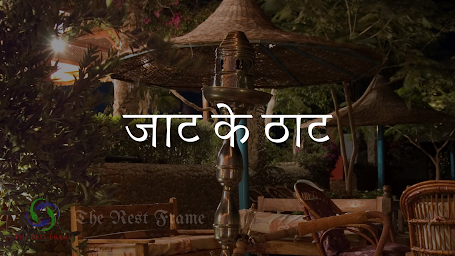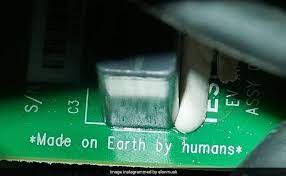Monster Culture (Seven Theses) by Jeffrey Jerome Cohen
I would like to propose is that I have developed a method of reading and understanding cultures by studying the monsters they create. Though this theory is not unfailing and is certainly not true in ALL CASES, I offer seven theses toward understanding cultures through the monsters they bear.
Thesis 1: The Monster’s Body Is a Cultural Body
Monsters are born at a metaphoric crossroads as an embodiment of a certain cultural moment -- of a time, a feeling, and a place. If you learn about the monster, you learn about the culture that created it. The monster’s body incorporates fear, desire, anxiety, and fantasy, giving them life and a kind of independence. The word MONSTER means “that which reveals” and “that which warns. A monster is an embodiment of any given society or culture’s fears. They are like a time capsule almost, a window into a culture.
Thesis II: The Monster Always Escapes
Even if monsters don’t escape at the end of stories, they are never really destroyed. How many heroes have fought vampires in story after story? We see the damage that the monster wreaks, the material remains such as footprints, bones, etc, but the monster always seems to vanish. He or she is never caught and fully understood. The movie always has a sequel. How many times will Ripley from the Alien movies fight various incarnations of the alien? How many times will Jamie Lee Curtis’s character Laurie Schrode fight Michael Meyers? How many people will face Freddy Kreuger?
Monsters change as the times change. Think about vampires for instance. When Bram Stoker was writing the original Dracula novel, the author himself was being influenced by Victorian values that made normal sexual feelings seem monstrous and wrong, as well as fears about people from foreign countries coming to England and changing things. Vampires return in many books by many authors and those authors have other influences different than Stoker’s. Therefore, their vampires take on other characteristics that represent their society.
In each of these stories, the undead returns in slightly different clothing, each time to be read against contemporary social movements or a specific, determining event.
Thesis III: The Monster Is the Harbinger of Category Crisis
Harbinger means a person who goes on ahead and makes the approach of something known, a herald. If your class was headed down to lunch, and someone went ahead to let the lunch workers know, you would be the harbinger.
Categories are the “boxes” in which we organize information. Categories are how we define things. We define music by categories such as hip-hop, country, and pop.
Monsters don’t like to fit easily into one type of category in the world. They are unnatural. They are unlike things that already exist in the world. If you think about the alien from ALIEN, it is totally nightmarish, defying every natural law of evolution. It looks like a crustacean, a human, a dinosaur, and insect-like. It doesn’t fit in one category. A werewolf is neither a wolf or a man. A vampire is neither living nor dead.
Monsters are scary because they refuse to be in a category. Monsters seem to like to break the laws of nature and physics and that’s why they are scary. In the face of the monster, scientific inquiry and its ordered rationality crumble.
Monsters exist on the fringes of society and when they invade where they are not supposed to be they make us uncomfortable.
Thesis IV: The Monster Dwells at the Gates of Difference
The monster is difference made flesh, come to dwell among us. It is supposed to be extremely different from us. It is the OTHER. It comes from the outside and the beyond. The monster is different from the culture that created it culturally, politically, racially, economically, and sexually.
Sometimes cultures will claim that people who are not part of their group are monstrous, and will tell stories of their monstrous qualities, though these are not true. Representing another group (like people of a different religion or from a different country) as monsters makes it easier for humans to do bad things like invade these people and go to war with them. Then the invaders seem like heroes who have destroyed monsters.
There are many examples. In medieval France, poets would write about the crusades, and they depicted Muslims (who they, as Christians, were fighting against for control of the Holy Land) as demonic creatures who lacked all humanity, displaying beast-like attributes. In other parts of Europe in the Middle Ages, people would spread horrible rumors about Jews, saying that they brought plagues to the cities and poisoned the wells. Native Americans were presented as savages and animal-like. This way the pioneers could push West and steal their land without having to feel guilty.
And the thing is, this kind of stuff happens all the time TO THIS DAY!
Sometimes political figures such as kings or presidents who do something to anger the people are labeled as monsters, especially by history itself.
Often, monsters represent gender politics. Many cultures have very specific rules for how women and men are supposed to act, women in particular. Often, in stories of female monsters, the monsters used to be human women. However, when that human woman does something that a woman is “not supposed to do” or that is “unladylike” she can become a monster. This could be anything from wanting to marry a husband of her choice, express her love, or even just think for herself.
Thesis V: The Monster Polices the orders of the Possible
Monsters usually stand as warnings against exploring the uncertain. The giants of Patagonia, the dragons of Asian traditions, and the dinosaurs of Jurassic Park together declare that curiosity is more often punished than rewarded. Cultures create monsters that warn people to stay the way they are, in a safe and predictable life. They warn people not to “go against” the cultural values, to stay close to home, or risk being attacked by, or becoming, a monster. Monsters say, “Don’t cross the line, or bad things will happen!”
The monster is a lawbreaker, and embodies all that must be exiled or destroyed. But as much as we repress them, they always return.
Thesis VI: Fear of the Monster is Really a Kind of Desire
The monster is always linked to forbidden practices and it does scare people. However, the monster also attracts. The monsters who terrify can also fascinate people because they represent things that culture and society tell you not to do. The monster can represent freedom from restraint and the possibility of adventure. Monsters simultaneously repel and attract. Sometimes we envy a monster’s freedom and power. Also it’s sometimes fun to be frightened by monsters, as long as it is in a controlled environment (such as a movie theater). When we think about monsters, we are simultaneously scared and interested, and that is why monsters will always be popular.
Perhaps it’s time to ask the question... do monsters really exist?
If they do not, then how could we? One side of the coin cannot exist without the other.
Thesis VIII: The Monster Stands at the Threshold... of Becoming
Monsters are our children. They can be pushed to the farthest margins, hidden away at the edges of the world and in the forbidden recesses of our mind, but they always return. And when they come back, they bring not just a fuller knowledge of our place in history and the history of knowing our place, but they bear self-knowledge, human knowledge. These monsters ask us how we perceive the world, and how we have misrepresented what we have attempted to place.
They ask us to reevaluate our cultural assumptions about race, gender, our perception of difference, our tolerance toward its expression. They ask us why we have created them.



Comments
Post a Comment